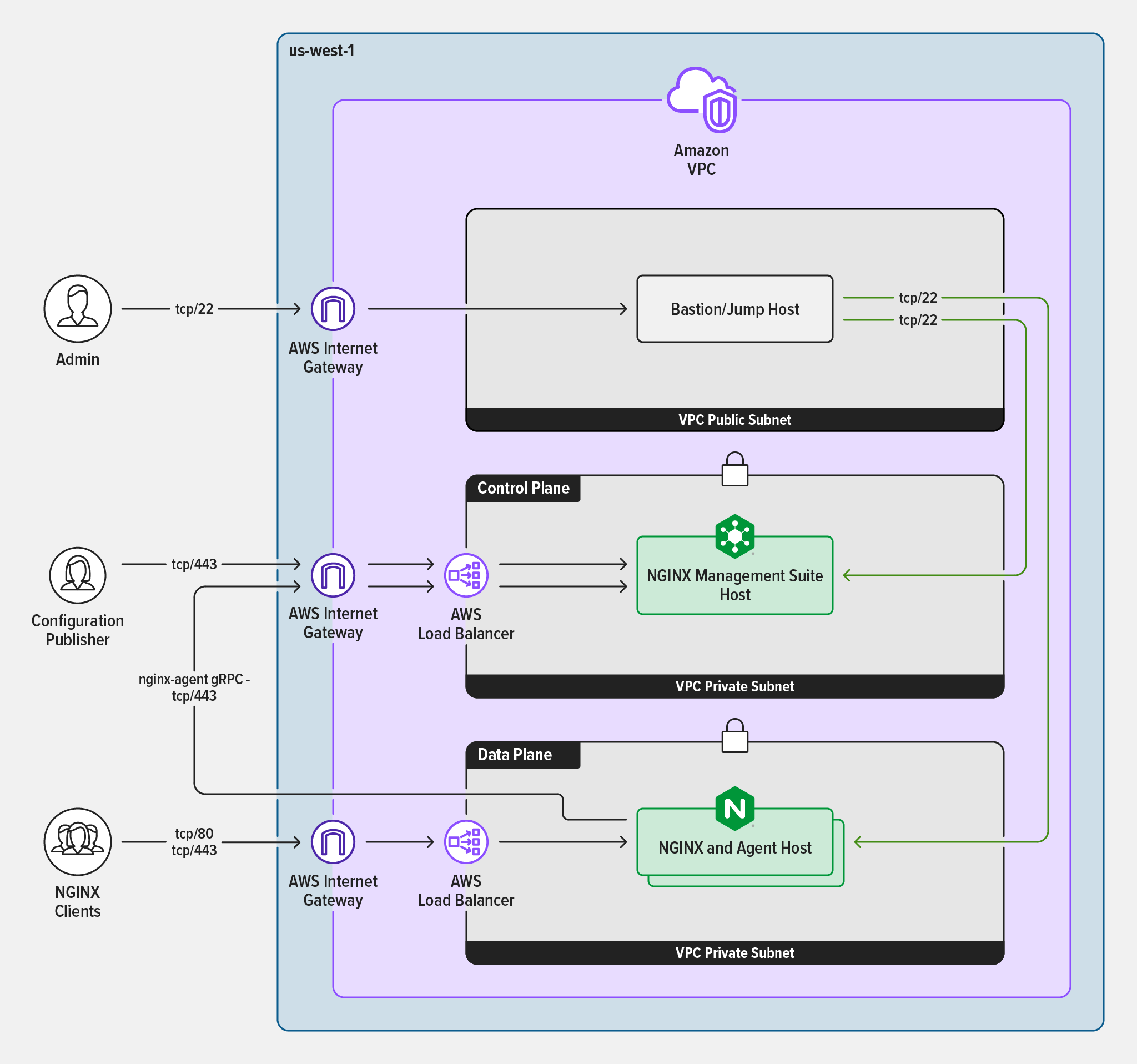Build and deploy images
Some commands, file paths, and configuration references still usenmsdue to the ongoing transition from NGINX Management Suite (NMS) to NGINX Instance Manager (NIM). These will be updated in future releases.
This guide provides step-by-step instructions for building and deploying F5 NGINX Instance Manager images on different cloud providers.
The deployment process has two stages:
- Generate an image using Packer.
- Deploy the image using Terraform.
The steps in this guide refer to the NGINX Instance Manager Infrastructure as Code (IAC) project on GitHub.
Before you start building and deploying images, ensure you:
- Install Packer requirements: Follow the instructions in the NGINX Instance Manager Image Generation README.
- Install Terraform requirements: Follow the instructions in the NGINX Instance Manager Image Deployment README.
The Packer stage involves building the cloud image and installing NGINX Instance Manager using an Ansible role. This image will be used later in the deployment stage.
To generate the image, follow the steps appropriate for your cloud deployment in the NGINX Instance Manager Image Generation README.
The Terraform stage involves deploying the cloud images created during the Packer stage. There are two types of deployment examples: Basic Reference Architecture and Standalone Architecture.
Ensure you’ve built the relevant images with Packer before continuing. For the Basic Reference Architecture, you’ll need both NGINX Instance Manager and NGINX images.
The Basic Reference Architecture deploys both the control plane (NGINX Instance Manager) and data plane (NGINX Agent) using cloud best practices. It includes:
- Load balancers
- NGINX Instance Manager and NGINX Agent instances in the private subnet
To deploy the Basic Reference Architecture, follow the steps in the AWS NGINX Instance Manager Basic Reference Architecture README.

Figure 1. AWS NGINX Instance Manager basic reference architecture
The Standalone Architecture deploys the control plane in isolation. This is not a best practice solution but can be used as a simple deployment option for multiple clouds. The standalone architecture includes:
- Control node in the VPC’s public subnet
- Security groups to give restricted access
To deploy the Standalone Architecture, follow the steps for your infrastructure in the How to Use section of the NGINX Instance Manager Image Deployment README.

Figure 2. NGINX Instance Manager standalone architecture